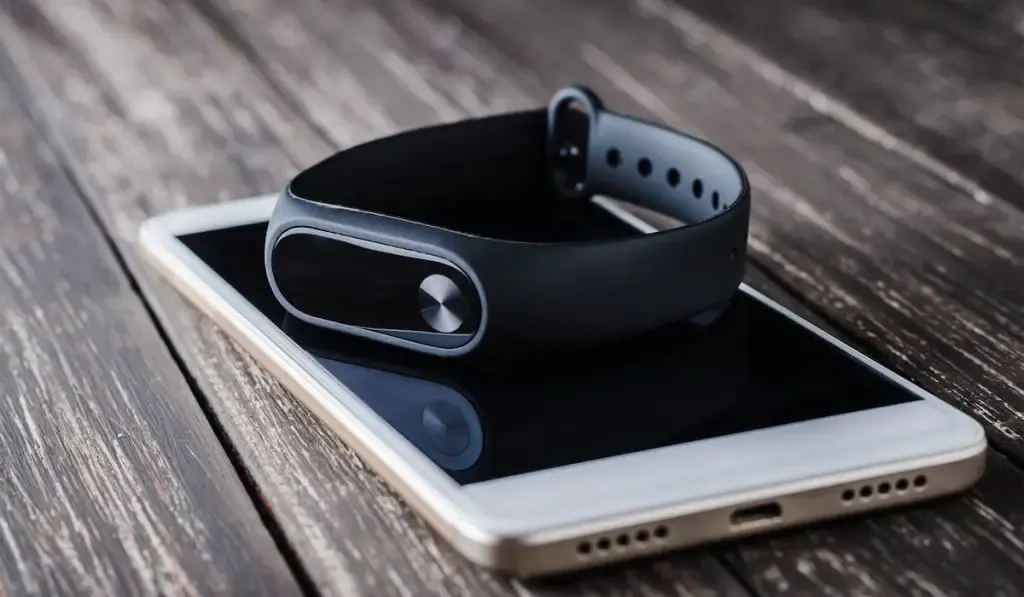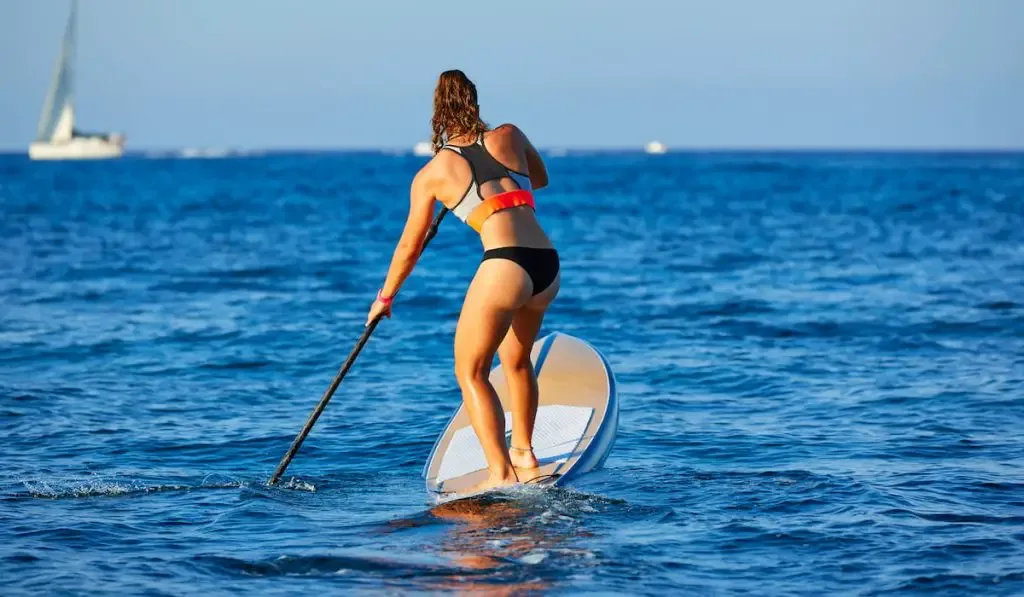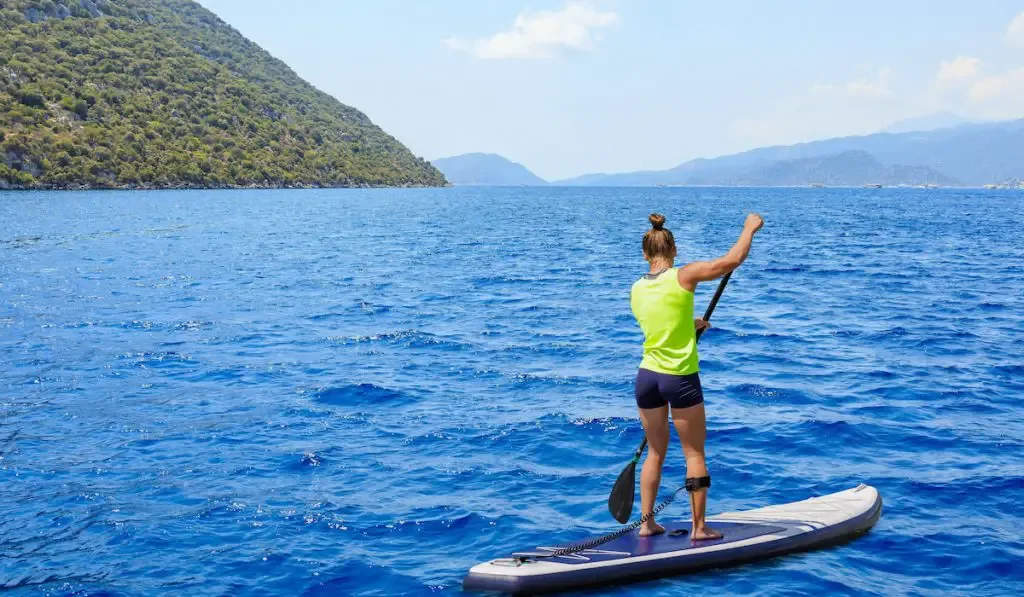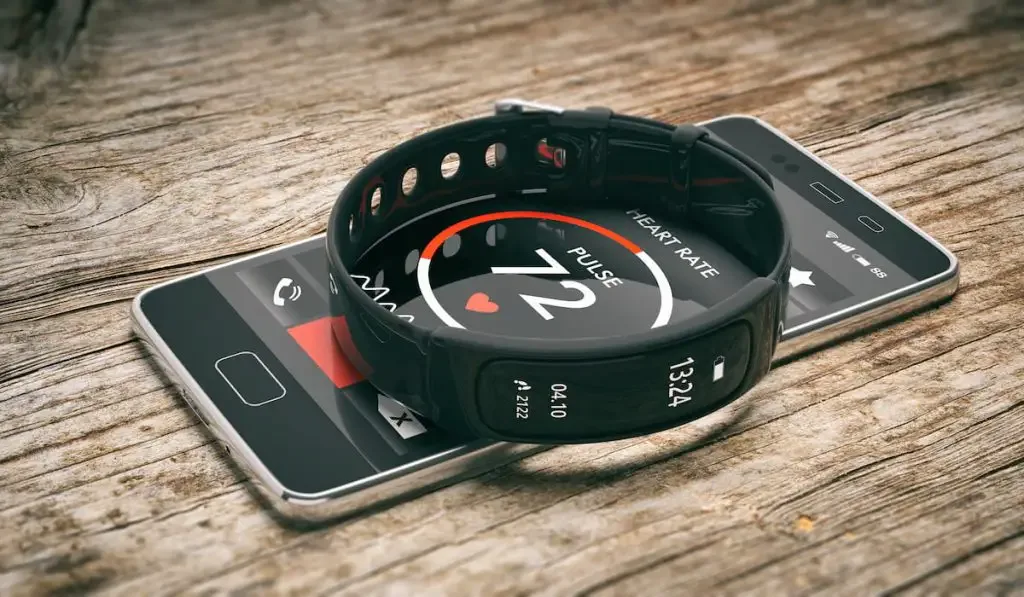Fitbit is one of the world’s most popular fitness trackers available. With a simple device on the wrist, you can track steps, heart rate, sleep quality, and other health metrics.
Wearing a fitness tracker isn’t going to automatically get you in great shape, but it’s a good way to remind yourself to stay active, track calories you burn, and hold yourself accountable to make fitness play a bigger role in your life.
One of the challenges with these devices is that they don’t track every type of activity. You have to take it off, for example, when you’re doing something like boxing or jiujitsu. These devices are also fairly limited when it comes to things like cycling, kayaking, and stand-up paddleboarding.

The watch or wearable has a hard time tracking movement on the water or a bike. The pedometer function doesn’t track as well, making it difficult to gauge distances traveled and calories burned.
Hopefully, at some point, FitBit and other fitness trackers will include an option to track paddleboarding. The company is already making strides to include more water fitness categories.
Right now, you can log exercise doing things like water aerobics, water polo, water skiing, and water volleyball. Until then, though, let’s examine ways you can use your FitBit to log the time you spend out paddleboarding.
Paddle boarding as an Aerobic Exercise
There’s no question paddleboarding is an amazing exercise. All you have to do is try it once to realize how many calories you’re probably burning. Experienced boarders make it look so easy. They’re out there on the water gliding as they paddle in a way that almost looks effortless.
It almost looks relaxing.
Well, it is relaxing, but it’s also a great workout! While you’re out there, you’re pushing your board and your body weight through the water. Your muscles tense and relax to maintain balance through every ripple. Getting on and off the board is also a lot of work!
People love paddleboarding so much because it’s a fantastic workout in terms of calories burned, but it’s also a ton of fun. As you gain experience on your board, you’ll paddle faster and go farther, spending more and more hours out on the water whenever the weather is nice outside.
With regards to numbers, paddleboarding usually burns anywhere from 330 to 450 calories for every hour you’re out there. That’s a good number! Much better than plodding along on a sidewalk jogging.
When you’re on your paddleboard, you’re getting fresh air, much-needed vitamin D, and all of the other benefits of outdoor activity. You’re also around calming water that can make it seem like it’s not hard to exercise.
Paddleboarding is also relatively low-impact. You’re not destroying your knees by running five miles on the concrete multiple times a week, and you’re not risking injury by lifting heavy weights in the gym or playing basketball well past your prime.

Safety First
We know you want to start paddleboarding and burn all of those calories, but you need to make sure that you’re prepared and safe at all times.
Staying on your board and avoiding dangerous water conditions are keys to getting better exercise, whether you’re tracking it on a fitness tracker or not. Here are some of the basic gear that you need to go paddleboarding every time.
Life Vest
The first thing you should buy along with your paddleboard and paddle is a life vest. If it’s been a while since you’ve been into a water sport, you’ll be pleasantly surprised.
Gone are the days where you could only choose between a variety of bulky and uncomfortable personal flotation devices.
Now, you can find performance paddleboard life vests that allow a good range of motion. They’ll also help keep you warm. You’ll be glad you’re wearing one for those times when you’re in the ocean or deeper water and you need to get back onto your board.
Always wear a life vest, the risk simply isn’t worth it.
A Leg Leash
Another item you should always use is an ankle leash that attaches you to your board. You’re out there, after all, to get some exercise. You don’t want to burn yourself out chasing your board down that’s several feet away every time you fall into the water or decide to take a dip.
The available leashes are comfortable and stretch to a good distance, so they aren’t constraining at all. You can just yank on them and drag your board back to you when it’s time to get back on.
Paddles
There are different types of paddles you’ll find online and in stores. Some are for kayaking, canoeing, and stand-up paddleboarding. Obviously, the best choice, in this case, is a paddle that’s made especially for paddleboarding. It will be the correct length and weight, and it will get you through the water with easier strokes.
Miscellaneous
The other stuff that you bring will depend largely on where you’re going. You may need a wetsuit, for example, if you’re paddleboarding in colder temperatures. You should also think about bringing a comfortable hat and sunscreen to avoid too much sun exposure.
Things like these that are part of successful planning make every paddleboarding trip a good one.

Logging Your Paddleboarding Exercise on Your FitBit
If you have a FitBit, and you want to log your exercise, there are things that you can do to track the exercise even without a specific ‘paddleboarding’ category.
We need to state first, however, that using another category or manually entering your exercise into your dashboard or via the device directly won’t be as accurate as if it did have a category.
So, you’ll have to take things like calories burned or completing exercise rings with a grain of salt. It will be comparable, but the numbers won’t exactly show what you did.
Tracking Paddleboarding as Another Type of Exercise
One way that you can track paddleboarding on your FitBit or any other fitness tracker is to log it as a comparable exercise.
For instance, paddleboarding is generally in the same boat calories-wise as running. So, if you want to go paddle boarding for an hour, you can simply log the exercise like running and have it be around the same in terms of numbers.
You’ll just need to remember, though, which times you used running for paddleboarding in case you get mixed up and can’t remember those times that you actually went running.
Cycle through some of the other fitness categories on your device and find ones that are similar in intensity to paddleboarding. Then, stick with those and find ways to remember which ones were the water-based activities.
Adding Exercise in Manually
Though this is never as nice as having your device track things in real-time, you can always manually enter exercise after you complete it. Some people don’t like to wear their devices in the water. They take them off and put them back on once they are dry again.
It’s a perfectly reasonable concern even though most fitness wearables are relatively waterproof these days.
By adding exercises manually, you get to specify how long you went, how many calories you burned, and other metrics. You can also label what type of exercise it was in some cases to help you with your fitness tracking journey.
Calculating Calories Burned
Another way to get more accurate data on your FitBit or some other fitness wearable is to find out approximately how many calories you’re burning per hour of paddleboarding.
There are some good fitness calculators out there that you can use to enter things like duration, BMI, heart rate, etc. to compute how many calories you’re running through while you’re on your board. It will help you manually enter better numbers.

Using Your FitBit with Other Apps
Some online users stated that a good workaround to tracking paddleboarding is to use the Strava app in conjunction with FitBit exercises. Here’s how:
- First, log your paddleboarding as a run or some other comparable exercise. Your device will track your heart rate, distance traveled, time, and other metrics to give you a pretty good exercise number.
- Then, let your FitBit send that data to your Strava app where it will log with all of your other activities.
- Finally, once in the Strava app, you can reclassify the exercise and enter in any type of activity whether it’s paddleboarding or something else that your FitBit can’t track.
There may be some other apps that will let you do something similar, but Strava is a popular exercise app with a good user interface.
Conclusion
For now, this is really the best we can do. The team at FitBit and other leading fitness wearable companies are always hard at work to add more categories in, and, hopefully, they’ll get stand-up paddleboarding in there soon.
Until then, stay safe, and do what you can to capture those epic paddleboard sessions that give you all of that terrific aerobic exercise!
